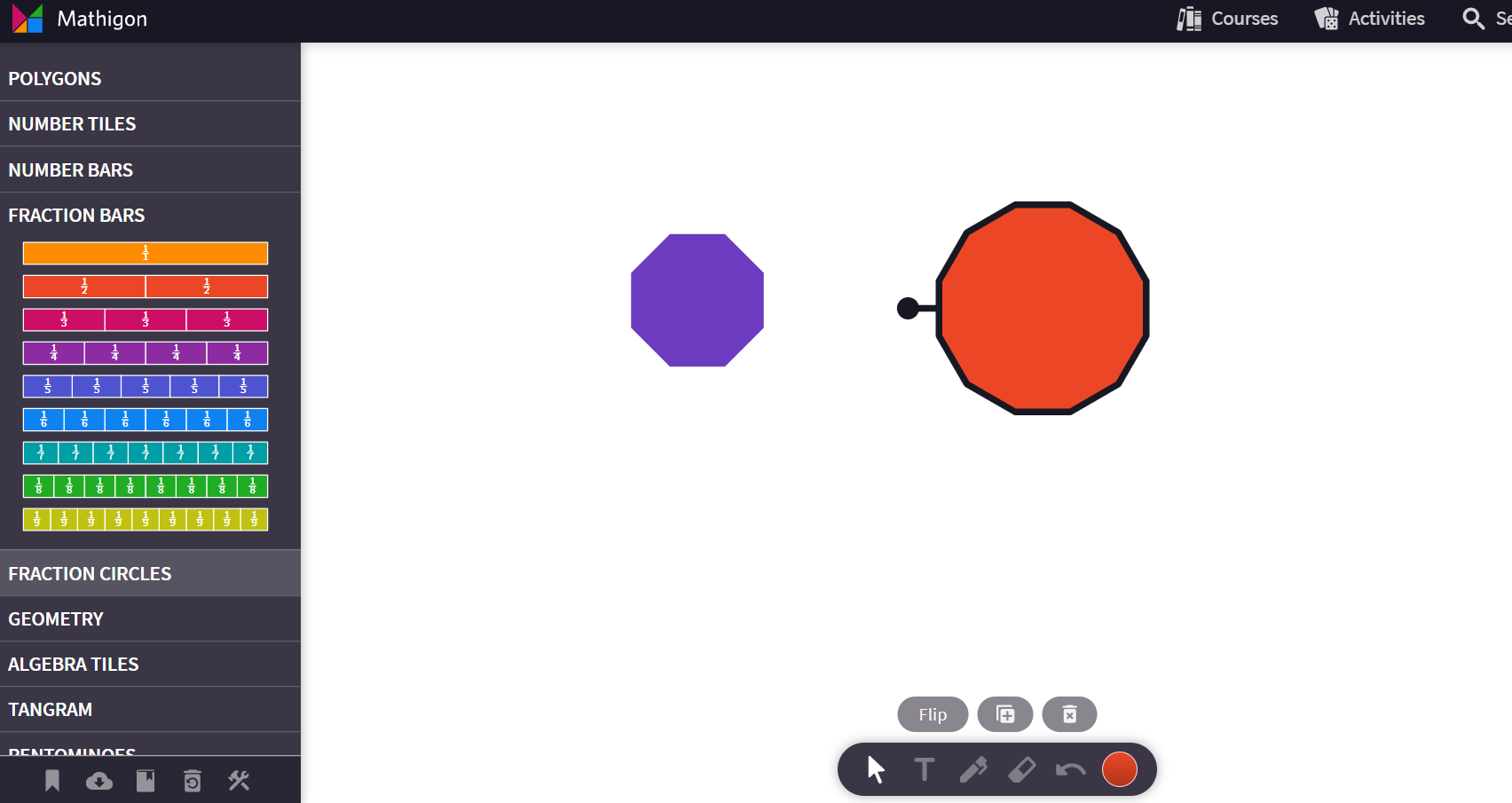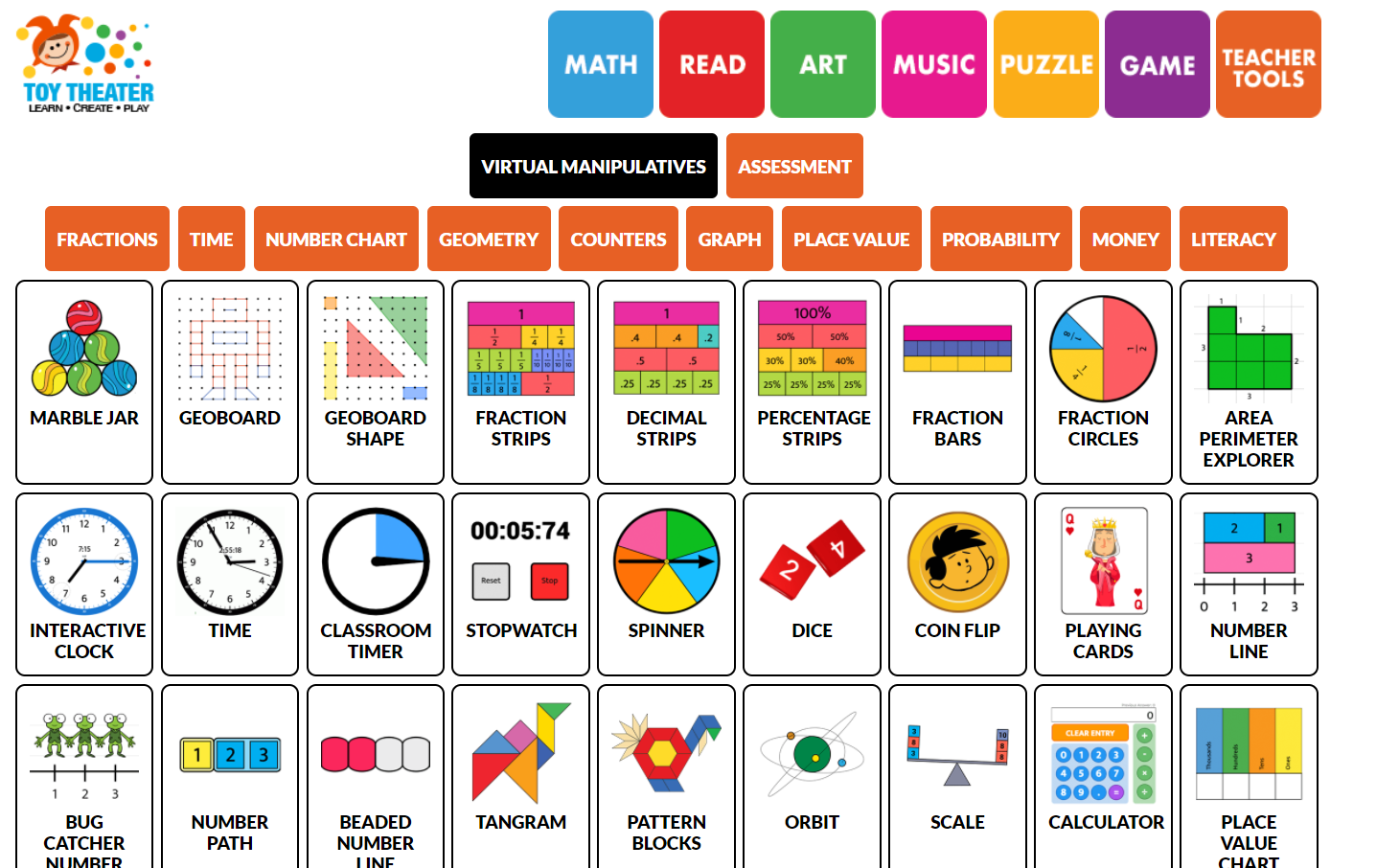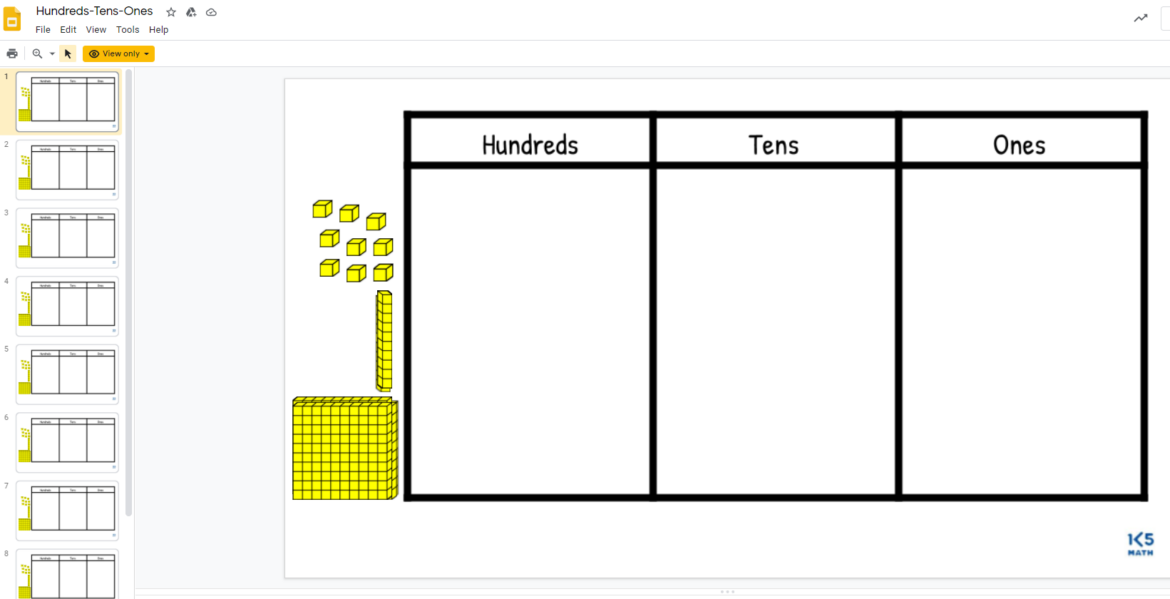Do you remember how you learned mathematics? My earliest recollections are a bit fuzzy. One thing I’m sure of is that using blocks and LEGOs to count is something I did at home, not school. The way I learned math in school involved endless worksheets. I remember graying out columns of blocks in two dimensions (on paper) with my pencil. As you might imagine, math was not my strong subject. I suspect it comes down to the fact that I seldom, if ever, had the opportunity to learn with manipulatives.
In this blog entry, we’ll explore the research behind manipulatives and see some online virtual manipulatives that can be used in hybrid learning situations.
Why Teach with Virtual Manipulatives?
The answer may seem obvious. Virtual manipulatives allow us to make the abstract concrete. For a subject like math, this is critical. Let’s take a look at what the research says about the use of virtual manipulatives in mathematics learning:
- Need to foster abstract reasoning? Manipulatives allow students to move from concrete experiences to abstract reasoning. (Heddens, 1986; Reisman, 1982; Ross and Kurtz, 1993 as cited here)
- Want to help students think and reason in more meaningful ways? Provide them with manipulatives. You can develop students’ well-grounded interconnected understandings of mathematical ideas. Do this when you give students concrete ways to compare and operate on quantities. Manipulatives such as pattern blocks, tiles, and cubes can assist in accomplishing this.
Long-term use of manipulatives in the classroom has yielded some additional benefits such as:
- Verbalizing mathematical thinking
- Discussing mathematical ideas and concepts
- Relating real-world situations to mathematical symbolism
- Working in collaborative ways
- Thinking in a divergent manner to find a variety of ways to solve problems
- Expressing problems and solutions using a variety of mathematical symbols
Find other curated research relevant to manipulatives online, including the source for the insights shown above. Need more research insights? This YouTube video may be helpful.
Virtual Manipulatives
Keeping the benefits of manipulatives in mind, how can we mirror those with digital tools? Virtual (a.k.a. digital) manipulatives may offer students one way to do that. Here’s how one website defines them:
Digital Manipulatives are computationally enhanced versions of physical objects. The goal is to make more concepts explorable via direct manipulation (adapted from source).
Be sure to take a quick look at my curated list of available digital manipulatives online. Of those listed, here are five to look at first.
1: Didax Virtual Manipulatives for Math
Didax’s website offers web-based manipulatives you can use at no cost. They also offer video tutorials for how to use their virtual manipulatives.
2: Mathigon’s Polypad (Updated: 09/16/2021)
Appearing in a tweet from Tony Vincent, Polypad offers some incredible digital manipulatives. You can add fraction bars, change the colors of objects, and much more.

On September 15, 2021, Ctrl-Alt-Achieve’s Eric Curts (@ericcurts) reported that “Polypad now has 3D solids. You can use the built-in solids or create your own with polygon tiles.” Eric’s tweet appears below:
Polypad now has 3D solids https://t.co/3EdoQUgCfj You can use the built-in solids or create your own with polygon tiles. #edtech #mathchat #mathschat #mtbos @MathigonOrg pic.twitter.com/NiITHjEcj7
— Eric Curts (@ericcurts) September 15, 2021
3: Mathspad
Thanks to Sue Hellman’s contribution in the comments, please find the Constructions Tool shown below. This Mathspad creation offers invaluable tools in digital space.

Give it a spin and see how it works for you and your students.
4: Toy Theater
This is a rich digital manipulative website. You can find a lot to explore. Before you ask yourself “How can I use this with my students?” watch Jessica Oldham explain how. Her audience is her students, and we can learn from her efforts.

5: Make Your Own with Google Slides
The K-5 Math Teaching Resources site offers a fascinating suggestion: have students work with digital manipulatives in Google Slides. They offer tips on how to best organize the lesson and provide several Google Slides templates. The templates include Five Frame, Ten Frame, Number Line 0-10, and Hundreds, Tens and Ones Mat among others.
Need Help Teaching with Virtual Manipulatives?
If you’re like me, teaching with virtual manipulatives may be a stretch for you. Explore these quick, short videos that provide suggestions.


7 comments
Here’s another for your list — https://www.mathspad.co.uk/i2/construct.php. MathsPad offers a life-like online geometry set (compass, ruler, protractor) so students can do digital geometry constructions even on an iPad!
Thanks, SueH! I’ve added it to the Diigo list of virtual manipulatives.
Regards,
Miguel
Why do so many people still list nlvm? It’s all Java based and doesn’t run in any modern browser or on any mobile device without a lot of work to make it work in the first place. Practically only useful in Internet Explorer.
Excellent point, Patrick. To honor your comment, NLVM has been replaced with Sue’s suggestion of Mathspad.
New tech, changing priorities, make change necessary.
With appreciation,
Miguel
Hello,
Our organization designs courses for teachers. I came upon your wonderful website, VIRTUAL MANIPULATIVES FOR MATH REMOTE LEARNING, and would like permission to include a link to the site in a resource list for teachers.
Thank you for your consideration!
Jill Cohen
Course Content Developer
That would be great, Jill. Thanks for checking!
Thank you!